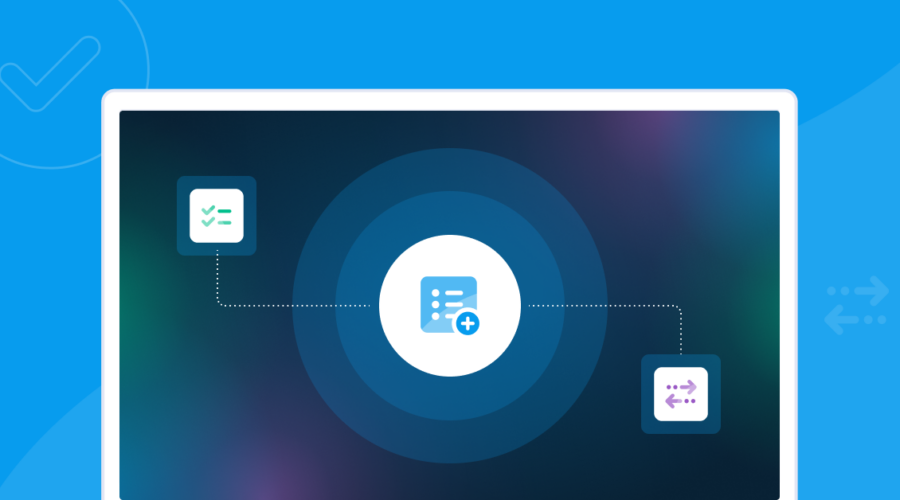If you’re reading this blog, you’re probably part of the 95% of enterprises looking to adopt or optimize AI in their contact centers (8×8). Or you’re a fellow product expert conducting market research on contact centers and AI. I see you and respect you. ❤️
Whatever your motivation, I’m sure we can agree that there are a ton of ways to improve contact center CX and operations using AI. And with so many choices, it can be hard to know if you’re making the right ones.
That’s why we’re here. In this blog, we’ll focus on one slice of the AI pie: Conversational AI.
What is Conversational AI?
Conversational AI refers to technology that you can talk to, like a virtual agent or chatbot. Conversational AI imitates human interactions using Natural Language Processing (NLP) to understand user intent and provide an appropriate response.
NLP allows interactions to flow with the freedom and flexibility of a natural conversation, compared to rigid IVR menus or voice/chat prompts.
Generative vs. Non-Generative AI
There are 2 types of conversational AI: generative and non-generative. It’s important to understand which type of conversational AI you’re using to have a full sense of its capabilities and potential impact on your contact center.
- Generative AI combines NLP with machine learning, which allows the AI to train using large amounts of data and improve responses over time. For example, a bot that was programmed to respond to “forgot password” with reset instructions may learn that users saying “forgot login information” also want password reset instructions.
- Non-generative AI (AKA classical or traditional AI) responds to requests purely based on input logic. It cannot ‘learn’ or change its responses other than what has been strictly programmed. A bot built with non-generative AI would never respond to “forgot login information” unless it was manually programmed to do so.
Benefits of conversational AI
There are many benefits of conversational AI. The most notable of which is its ability to facilitate human interactions, allowing you to augment your staff with virtual agents.
Scale with ease: Virtual agents are available 24/7 to field inbound customer requests, no matter the hour. They can also scale with demand, so you can have the support you need during busy seasons without the high labor costs.
Reduce wait times: With virtual agents, every call can be answered on the first ring, and queues can be reduced as customers are dealt with simultaneously (which also helps you scale). Conversational AI can be used to handle simple support requests, resolving 16% of inbound interactions without human intervention—keeping these calls from ever entering a live agent’s call queue (Metrigy).
Increase first contact resolution (FCR): Alongside reducing customer wait times (and call/chat abandonment rates), virtual agents can also improve FCR in a multitude of ways. Conversational AI makes self-service support more readily available, requires less customer effort, and leads to faster resolutions and more satisfied customers. Conversational AI can also collect in-depth customer information to help during the escalation process, so a live agent has enough context to jump straight into troubleshooting.
Improve agent productivity: Virtual agents can help live agents by handling simple requests, so live agents can focus on more important or complex support needs.
5 ways to use conversational AI in your contact center
1. Personalize customer experiences
In an era of abundant choices and fierce market competition, customers are raising the stakes for brand loyalty. Customers no longer want to be treated like a transaction, but rather want to feel special—like there’s an investment in the relationship & their business.
Personalization is quickly shifting from a ‘nice to have’ to a ‘need to have’ for customer interactions. 71% of customers expect companies to deliver personalized interactions. And 76% get frustrated when this doesn’t happen (McKinsey and Company).
Conversational AI can help deliver more personalized customer experiences without extensive trainings that take agents off the floor or huge process changes.
For example, you can program virtual agents to address guests by name by matching inbound calls with customer data and the phone numbers on file. Using generative AI, you can also train virtual agents to deliver empathetic responses so the customer feels understood when calling in with a problem or complaint.
2. Troubleshoot common questions
You can also program conversational AI to handle simple and repetitive tasks, and play the role of Tier 1 support.
These tasks may include: password resets, scheduling & managing appointments, answering account-related questions (such as account balance), or fielding operational questions (such as opening and closing times).
This allows live agents to be more efficient as they can focus on more important or complex tasks that require escalation.
Enterprise Communications Landscape 2025
Hear how 750+ IT leaders are using conversational AI in their contact centers.

3. Collect account information to prepare agents for live support
Even though conversational AI can’t answer every question, it can make the process smoother by collecting details and establishing context for the information-gathering stage of troubleshooting.
Conversational AI can ask general probing questions and share call summaries that identify the customer’s problem during the agent handoff. This information helps avoid customer frustration around repeating their concerns whenever a call is transferred and allows live agents to be more efficient and caring since they’re armed with the right context for handling the call.
4. Route complex concerns to the right team
The initial information-gathering stage can also be a crucial part of reducing Call Transfer Rate (CTR).
CTR measures the percentage of inbound calls that transfer—on one or more occasions—to another agent. Swivel chairing between agents can be a major source of customer frustration and adds on to Average Handle Time (AHT) as new support members must be read into the problem.
By using conversational AI to walk through the initial information-gathering stage and identify caller intent, customers can be matched to the right team on the first try.
5. Authenticate callers and contain fraud
Conversational AI can help qualify and identify callers by asking for Knowledge-Based Authentication (KBAs) or One-Time Passcodes (OTPs), and matching responses to the customer database. With customers already verified, live agents can jump straight into troubleshooting when a call is escalated, instead of wasting time on menial tasks—or falling for a fraudster.
If a caller fails the authentication process, then they don’t need to reach a live agent.
This has two benefits: improving customer experience and reducing fraud risk. Spam and fraud will be removed from agent call queues, reducing wait times for real customers. And, by only giving bad actors face time with a bot, your contact center could be more protected from social engineering fraud tactics.
Adding additional authentication measures to inform AI identification, such as spoof detection and risk scoring, can help further bolster contact center security.
Conclusion
There’s no one-size-fits-all approach to using Conversational AI in the contact center, so it’s important to go with a guide to find the most impactful opportunities that work for your business. Find the right channels and partners that work for you!




